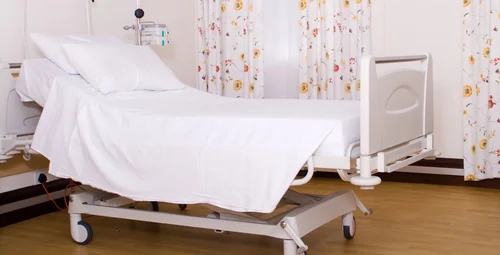The Importance of High-Quality Hospital Sheets in Patient Care
Hospital sheets may seem like a small aspect of patient care, but their significance in a healthcare setting cannot be overstated. High-quality hospital sheets are crucial for maintaining cleanliness, ensuring patient comfort, and promoting recovery. In a medical environment, where hygiene, patient comfort, and efficiency are paramount, selecting the right hospital sheets plays a pivotal role. This article will explore the importance of high-quality hospital sheets and how they contribute to the overall healthcare experience.
The Role of Hospital Sheets in Hygiene and Cleanliness
One of the most critical aspects of hospital sheets is their role in maintaining hygiene. Hospitals are environments where infections can easily spread, making cleanliness a top priority. Hospital sheets are in direct contact with patients, which means they can quickly become contaminated with bodily fluids, bacteria, and other contaminants. Using high-quality sheets made of materials that are easy to clean and sanitize helps prevent the spread of infections and diseases.
High-quality hospital sheets are typically made of durable, hypoallergenic materials that can withstand frequent washing and high temperatures. This is essential for maintaining a sterile environment, as hospital laundry protocols require sheets to be washed at high temperatures to kill bacteria and other pathogens. Low-quality sheets may not hold up to such rigorous cleaning, leading to wear and tear, which can compromise the cleanliness of the sheets.
Patient Comfort and Recovery
Another critical factor in choosing the right hospital sheets is the comfort they provide to patients. Hospital stays are often uncomfortable experiences, and anything that can make a patient feel more at ease can have a positive impact on their recovery. High-quality hospital sheets are softer, more breathable, and better at regulating body temperature than their lower-quality counterparts.
Patients who are bedridden or spending extended periods in bed are especially vulnerable to discomfort. Low-quality sheets can cause skin irritation, rashes, or pressure sores, which can complicate a patient’s recovery. Conversely, high-quality sheets made from materials like cotton or a cotton-polyester blend are gentle on the skin and help prevent bedsores.
In addition to physical comfort, the aesthetic appeal of hospital sheets can also have a psychological impact on patients. Clean, soft, and visually appealing sheets can create a sense of calm and well-being, which can be beneficial for patients who are anxious or stressed about their medical conditions. Providing patients with a comfortable and serene environment can contribute to faster healing and better overall outcomes.
Durability and Cost-Effectiveness
While it may be tempting to cut costs by opting for cheaper hospital sheets, investing in high-quality options is more cost-effective in the long run. High-quality hospital sheets are designed to withstand frequent use and laundering without losing their integrity. They are less likely to tear, fray, or wear out quickly, which means hospitals will not need to replace them as often.
Durable hospital sheets reduce the need for constant replacements, helping healthcare facilities save money in the long term. Additionally, the durability of the sheets means that they can retain their cleanliness and comfort for longer, ensuring that patients always have access to clean, comfortable bedding.
Specialty Hospital Sheets for Unique Needs
In certain medical settings, specialty hospital sheets are required to cater to unique patient needs. For example, bariatric patients may need oversized sheets to accommodate larger beds, while neonatal intensive care units (NICUs) require sheets that are safe and comfortable for premature or newborn infants. Specialized hospital sheets are also used in burn units, where patients have delicate skin that requires extra-soft, non-irritating bedding.
Pressure-relief sheets are another type of specialized hospital sheet that is designed to prevent bedsores and pressure ulcers in patients who are bedridden for long periods. These sheets are often made from materials that redistribute weight evenly, reducing pressure on vulnerable areas of the body.
Eco-Friendly and Sustainable Hospital Sheets
As healthcare facilities become more aware of their environmental impact, there is a growing demand for eco-friendly and sustainable hospital sheets. Traditional hospital sheets are often made from synthetic materials that are not biodegradable and require significant energy and water resources to produce and maintain. However, more hospitals are now opting for sheets made from organic cotton, bamboo, or other sustainable materials.
Eco-friendly hospital sheets not only reduce the environmental footprint of healthcare facilities but also provide patients with bedding that is free from harmful chemicals and allergens. Organic materials are gentler on the skin, making them ideal for patients with sensitive skin or allergies. Additionally, sustainable hospital sheets can contribute to a hospital’s overall green initiatives, helping healthcare providers meet their sustainability goals.
Choosing the Right Hospital Sheets
When selecting hospital sheets, there are several factors that healthcare facilities need to consider to ensure they are providing the best possible care for their patients. Some key considerations include:
Material: Cotton and cotton-blend sheets are the most common choices due to their softness, breathability, and durability. Hospitals should look for sheets that are easy to clean, hypoallergenic, and gentle on the skin.
Thread Count: A higher thread count typically indicates a softer and more durable sheet. While hospital sheets do not need to have an extremely high thread count, choosing sheets with a moderate thread count ensures comfort and durability.
Fit: Hospital beds often have unique dimensions, so it is important to choose sheets that fit securely without slipping. Elastic corners or deep pockets can help keep sheets in place on hospital beds.
Color and Aesthetics: While white is the traditional color for hospital sheets, some hospitals are incorporating colored or patterned sheets to create a more inviting and comfortable atmosphere. Hospitals should consider the visual impact of their sheets, as this can affect a patient’s emotional well-being.
Cost: While cost is always a consideration, it is important to remember that investing in higher-quality sheets can save money in the long term. Durability, ease of cleaning, and patient comfort are all factors that should be weighed against the initial cost of the sheets.
Conclusion
High-quality hospital sheets are an essential component of patient care. They play a vital role in maintaining hygiene, providing comfort, and supporting patient recovery. By investing in durable, comfortable, and easy-to-clean sheets, Direct textile store healthcare facilities can ensure that they are providing the best possible care for their patients. Additionally, by considering eco-friendly options, hospitals can also reduce their environmental impact while still prioritizing patient well-being. In the end, the right hospital sheets can make a significant difference in the overall healthcare experience.






Post Comment